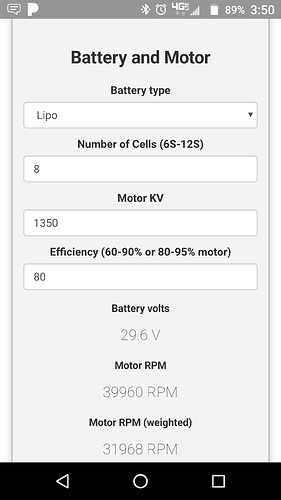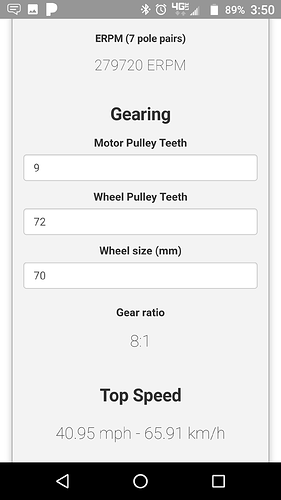What did you mean with “overcharge” then?
I’ve been told that for a 3 cell battery it should have a total output of 11.1V, which makes sense at 3.7V per cell. What seemed a bit weird to me though is that people were also recommending to stop and charge when each cell reaches around 3.5V. When done charging, mine is usually around 12V so that I can get max distance with my batteries.
@anorak234 You charge up to about 4.20v and nominal is at 3.7v. I would stop riding when cells get to about 3.6v since the lower you go doesn’t make a difference and your pack will last longer = less stress. Total voltage when you charge should be 12.6v which is 4.2v *3. You can technically charge to 4.15v for less stress on a pack but if they are only 3 cells. I’d just buy a replacement when they start to lose their capacity.
So basically you don’t know how batteries work. 3.7V is just the nominal voltage a lipo has. Charging will obviously increase voltage and you can safely charge them to 4.2V (I go to 4.1V to increase battery life). When discharging you use up the stored energy and the voltage will drop below the nominal voltage. 3.5V seems like a good cutoff. Have a look at a typical lipo discharge curve to see how much energy you have at what voltage.
Yes I basically don’t know how my batteries work  . Thanks for the info.
. Thanks for the info.
Man I bet that gear ratio could recharge half your battery going down a huge hill with regenerative braking! Hahaha
tighter ratios are better for regen braking
@Kaden56 raises a really good point; how do we calculate the recharge rate of regen braking? It’s clear that bigger gear ratios would produce less energy than others during regen braking, but how much? I don’t know how to calculate it. Has someone made a regen calculator?
bigger ratios means the motor is spinning slower for a given speed. You need the motor to be generating a higher back emf voltage than your battery’s current voltage to regen. That’s why tighter ratios are better for regen braking.
@Jinra is totally right I’ll edit accordingly! Bigger ratios produce less energy! Thanks!
But the question still stands; how do we calculate that value and how do we use it to produce builds that don’t overcharge?
Help Id like to share my gear ratio because I feel it is inadequate for my uses, but my issue may be a Vesc limitation or something. Deets: 63mm 190kV 10s 15\36, 97mm
and I am looking for more speed. At top speed the motor is working at like 25-35%. It pulls so hard down low (enough to put you on one foot falling off the back of the board) but then quickly gets to top speed and stops pulling/accelerating. At top speed (roughly 25 mph) I can let the throttle off to like 30 percent before it starts slowing down.
Maybe I have a VESC setting wrong but it just stops accelerating at top speed, even though it seems to have more torque/ power available since I can let off the throttle so much without slowing.
Regarding hills,I only weigh 155 lbs and the minor hills here have not been any issue.
I would suggest you look at dual motors. The difference is night and day. I went from running a 6355 245kv to 190kv because of a shaft shim issue, then to dual 190kv motors and there is so much torque and throttle I can’t use it all.
So, the VESC doesn’t throttle based on speed, it’s based on how hard it’s working (current).
The reason you have to throttle down to 30% to get it to slow down is because it’s only taking 30% of the max current to maintain your speed. With your given ratio, you can’t get over 25mph due to the max speed of the motor.
I recommend you change your gear ratio or increase voltage for more speed.
Hi looking at using dual Ollin 2200W 200kv with a 14/44 tooth drive ratio and 83mm wheels. Battery would be 36v question is what kind of top speed would I be able to get with this setup? Also would the Torque be too great I want something that accelerates fast but not so it chucks me off the board. Any help appreciated.
Cheers
44T on a 83mm wheel will be very close to ground.
With those dual motors and 83mm wheels you would be better off with 32-36 T wheel pulleys and 15-16 T motor pulleys.
On a 200kv dual with those wheels i would go 16T, 32T , will be better all round , more room between wheel pulley and ground , …and with 16T more teeth in mesh
Using 3M HTD. 48 drive. 32 motor. SK3 149 kV. 97mm ABEC11 flywheels. Doesn’t start from a dead stop. Can tackle hills, but must be over speed threshold to keep the forward momentum going. Adding a second motor will solve the problem.
Twin inrunner 1350kv 8:1 drive ratio. 72t spur 9t pinion on 70mm wheel.
how do you calculate that?
Currently running 18:34 (~1.89) on 83mm wheels, with a 149kv SK3-6374 at 12S voltage
This gives a max weighted (verified) speed of ~27mph. But it can climb the steepest hills in town (in Colorado) at that maximum speed (25mph+). Gearing your board to go 40mph+ is just throwing away torque if you don’t actually use it
I have another motor pulley to get me to 20:34 (1.7), with an expected 30mph max speed

